- Mites are tiny insects that feed off plants, and cannabis is no exception.
- Microscopic in size, they are invisible to the naked eye.
- This, coupled with their voracious appetite, makes them a dangerous enemy that can easily destroy an entire crop.
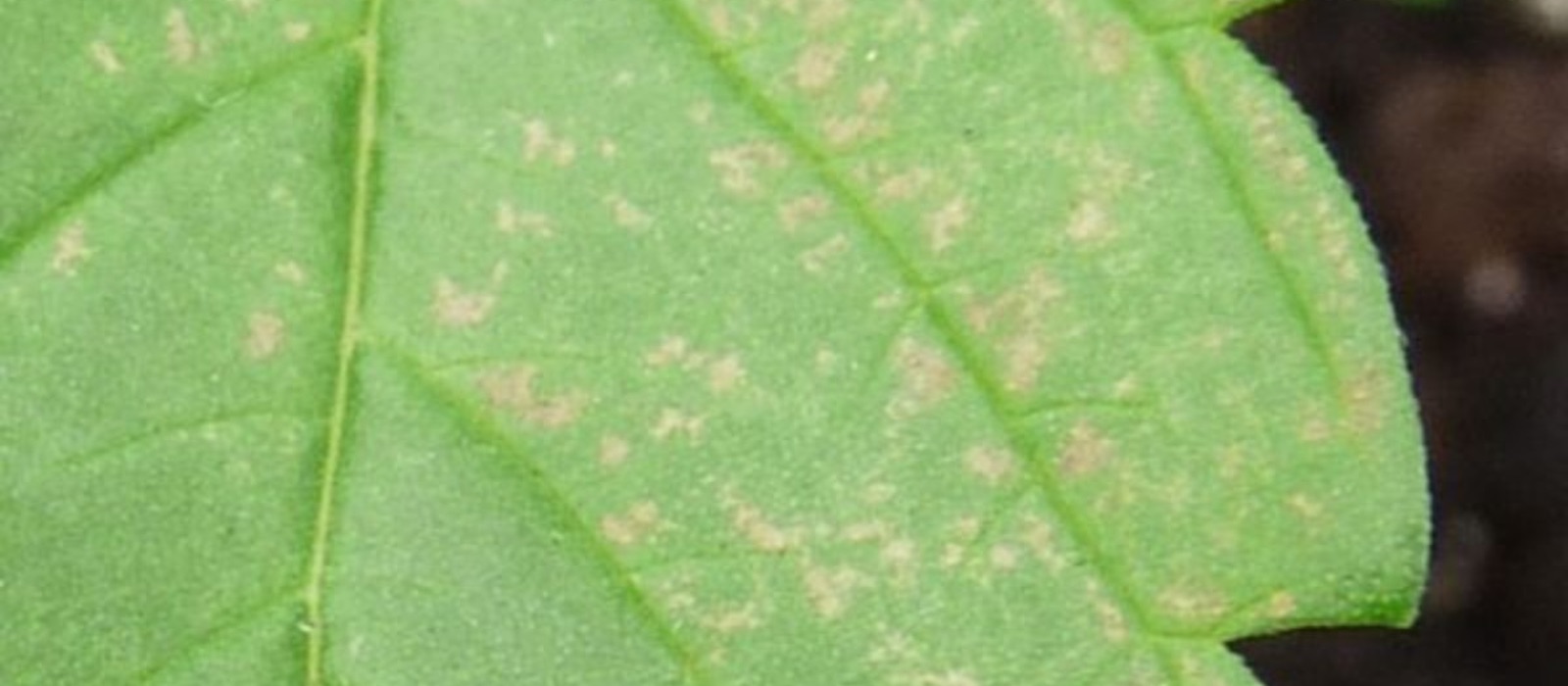
Mite is the common name used to refer to a number of insect species belonging to the Eriophyidae and the Tarsonemidae families. Smaller in size, they should not be mistaken for red spider mites, which belong to the mite family Tetranychidae.
Similarly to red spider mites, they are arachnids, a class within the phylum Arthropoda that is characterised by having four pairs of jointed legs. Headless and jawless, mites feed off the sap of plants, releasing a toxin that interferes with plant growth.
Even in small numbers, mites can cause a lot of damage in little time, as they attack young buds and leaves. These can go curly at the edges or roll inwards, becoming brittle and showing signs of tearing. Affected leaves may also look glossy or dewy. Plus, the internodes become shorter, the shoots stop developing and the plant's growth becomes stunted. The damage is similar to that of herbicides.
What makes mites so dangerous is the fact that they are invisible to the naked eye. You will actually need a microscope in order to detect them, as even magnifying glasses prove ineffective. To make matters worse, the symptoms caused by these tiny arachnids are easily mistakable for a nutrient deficiency or a pH imbalance, adding to the difficulty of identifying an infestation.
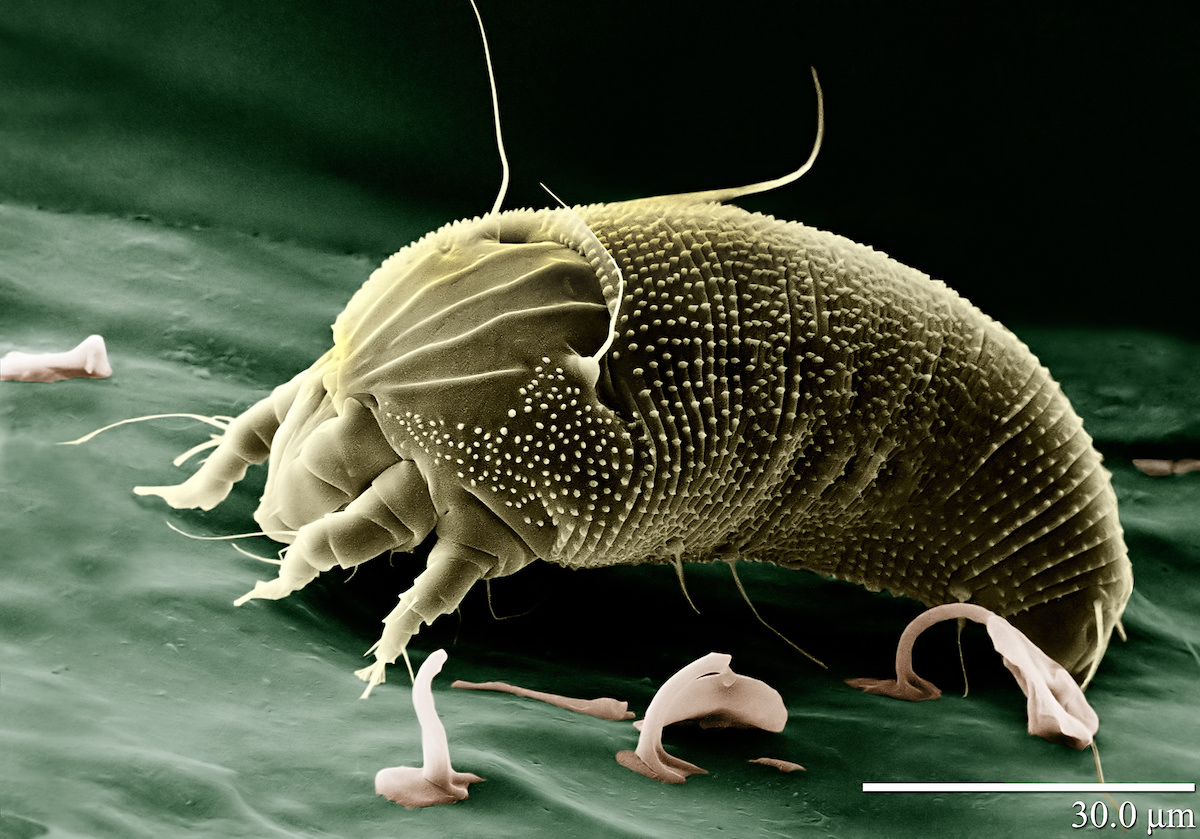
Symptoms include yellowing foliage and stems, curling and drooping leaves and stunted growth
What type of mite is behind the attack?
Among the many types of mites, Tarsonemus latus and Stenotarsonemus pallidus are the ones that most commonly affect cannabis plants, both causing similar damage.
- Native to the tropics and subtropics, Tarsonemus latus is commonly found in Europe too. Yellowish or greenish in colour, adult females measure 0.14-0.24mm and adult males measure slightly less, between 0.11 and 0.17 mm. They develop on the underside of leaves, from where they can move to flowers while they are still closed. Plants affected by this species become discoloured and wilt, with flowers that become deformed and eventually fall off.
- Belonging to the Tarsonemidae family, Stenotarsonemus pallidus is a common pest of strawberries, but being a polyphagous organism, it is commonly found on cannabis too. Oval-shaped, adults measure between 0.2 and 0.25 mm, reminding of tiny spiders despite their small size. Throughout their short life cycle - they live just 15 days - females can lay between 30 and 75 eggs. These are vitreous white and hatch into a young larva in 4-8 days.
Prevention is better than cure
Mites survive only under certain environmental conditions. Vulnerable to light and heat, they live at temperatures of 15-22 ºC and need a humidity level of 80-100%, dying when levels drop below 70%.
Mites can grow at any moment of the plant's life cycle, from the seedling to the flowering stage. A good way to prevent them is making your grow uninviting, even lethal, for their settlement, with humidity levels of 60-75% and temperatures of 22-25 ºC.
Remember that mites can get to the plants through a number of ways. Some may be transported by wind while others may be transmitted through contact with growing tools, people and insects like aphids and whiteflies. Animals like birds and rodents are also common means of transport used by mites in order to reach the plants.
If prevention fails, act
If prevention proves ineffective, there are a number of measures you can take in order to keep these pesky bugs at bay. Remember that the symptoms are similar to those of nutrient deficiencies or pH imbalances, so make sure it is mites you're dealing with before applying a treatment. Once you've confirmed the infestation, here are some different methods you can use to fight it:
Reducing humidity to 60-70% and raising the temperature to 22-25 ºC can help deal with mites
1- Biological control
Mite predators can prove effective in many situations. Common pests of commercial greenhouse crops, Euseius stipulatus and Typhlodromus ovalis, two natural enemies of mites, have been identified as effective biological control agents by many universities. Alternatively, you can use Amblyseius californicus, which feeds off both mites and red mites, but remember that, in the absence of food, predators will either leave or die.
However, there's nothing like Coccinellidae, commonly known as ladybugs, to keep your plants healthy, as they are predators not only of mites but also of other pests that commonly attack cannabis, such as aphids and cochineals. Hence, these active 'natural enemies' can really help when it comes to dealing with the threats that lurk in your grow.
2- Neem oil
Neem oil is an excellent natural solution against mites. It is available from most grow shops and gardening shops and is really easy to use; just insert it in a mister and apply it to the affected areas of the plants.
Bear in mind, however, that while natural, it is quite a strong substance, so avoid spraying it on the top of the plant or for long periods, otherwise your buds will taste unpleasant. If the infestations is not severe, we recommend using it once and monitoring the plants for a couple of days. You can use it more frequently if necessary, but bear in mind that these will mean your plants will need some extra care during the treatment. Other natural oils that provide similar results include eucalyptus, rosemary, lemon and cinnamon.
3- Sustainable control: Organic pesticides
If Neem oil proves fails to control the infestation, you can try with organic pesticides:
- Essentria IC3: Made up of a mix of vegetal oils, it can be sprayed directly to the plant. Treatment should be repeated every 8 hours until the unwanted settlers disappear completely.
- Spinosad: This pesticide kills pests on contact and should therefore be applied directly to affected parts. Use it once a day until the mites are eliminated.
4- The last resort: Chemical weapons
No matter how hard you try, sometimes prevention and biological control will simply not do. In such cases, and only if the situation is serious enough, you can resort to chemical pesticides.
These products are highly effective and can be used for dealing with a variety of pests. The downside is that they contain heavy chemicals that can stress the plant and may leave toxic residues that are not fit for consumption, so make sure you use them with caution.
If you opt for a chemical pesticide, apply it directly on the affected parts of the plant and leave it on for some time. In some cases, you may need several applications to make sure the pest is gone completely. After treatment, remember to thoroughly flush the soil. You can now resume your normal plant care routine with the peace of mind that mites will no longer be a problem.



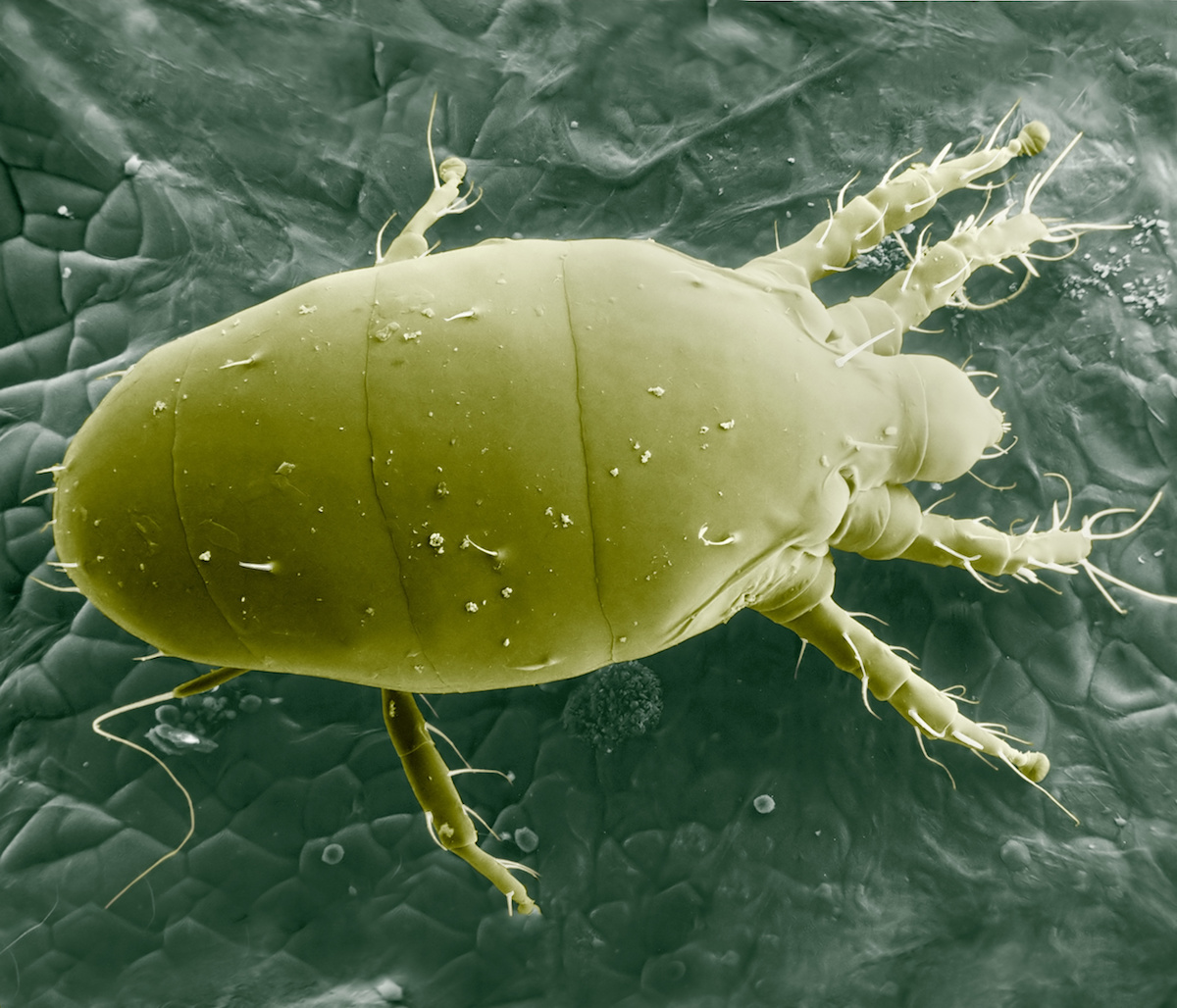
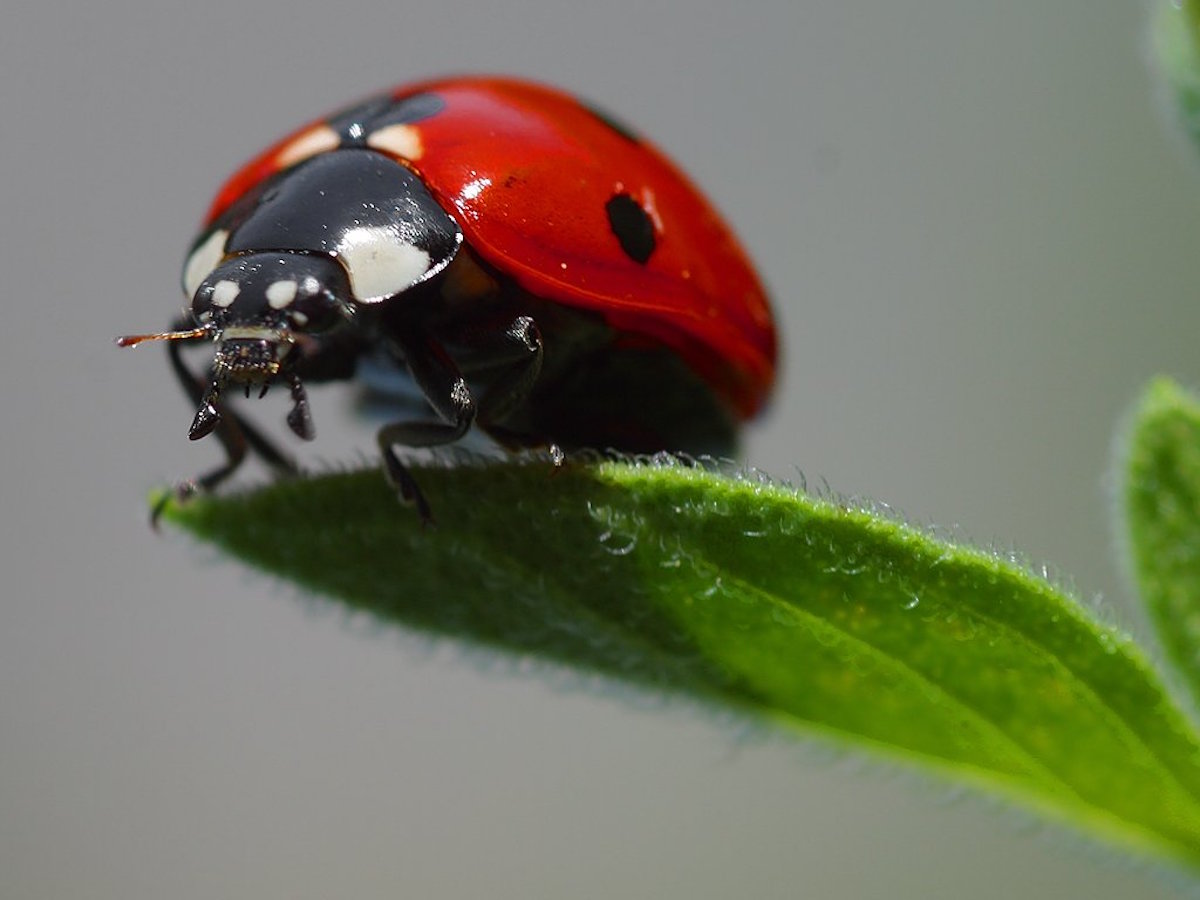
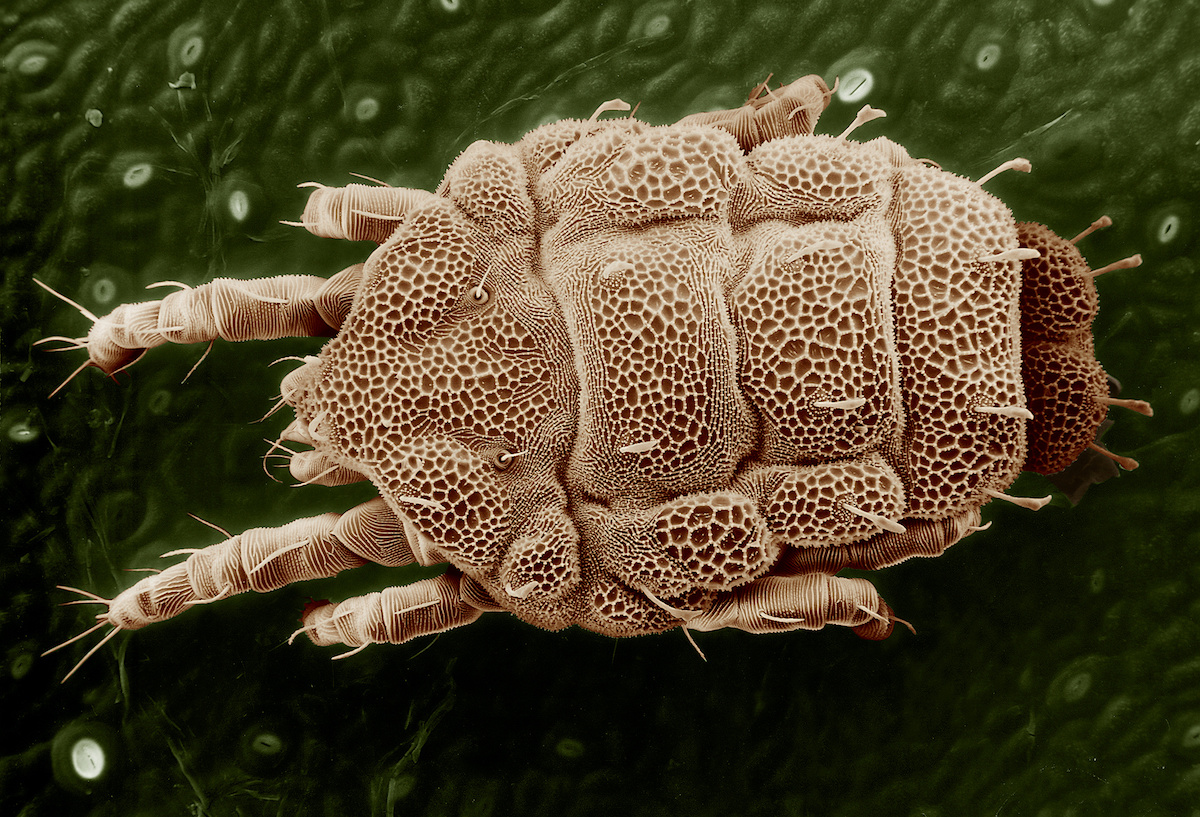
Comments from our readers
There are no comments yet. Would you like to be the first?
Leave a comment!Did you like this post?
Your opinion about our seeds is very important to us and can help other users a lot (your email address won't be made public).